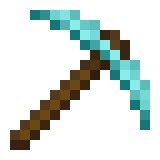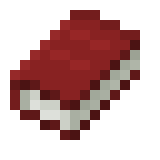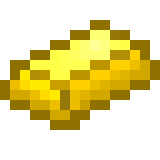Reviewer: John B
Developer: Oddworld Inhabitants
Publisher: Oddworld Inhabitants
Category: Action, Puzzle, 3D Platformer, Adventure
Release Date: 3.14.2020
Price: $29.99

Watch the Trailer
Buy Oddworld: Munch’s Oddysee from the Nintendo Switch eShop here.
If there’s one thing that I’ve learned during my time writing about video games, it’s that there are a lot of classic franchises to which I’ve never had any exposure. I mean, maybe I’ve seen ads or articles about them back in the day but I never followed them or played them. Case in point, today’s game: Oddworld: Munch’s Oddysee. It’s been around since the PSX days, and it obviously has fans because they keep (gradually) making new games and re-releasing the old ones. I’ve never played one, though, or possibly even seen any gameplay until I watched the trailer before I started playing Munch’s Oddysee for today’s review. I came away impressed by a lot of what I experienced, but some aspects of the game are a little too dated to be appealing.

Munch Gets the Title, But Abe is Here, Too
My biggest fear when jumping into a long-running series is getting lost by a long backstory or unexplained lore. Munch’s Oddysee takes care of that problem pretty handily by offering video summaries of the first two games to get new fans caught up on the situation. Basically, there’s this Mudokon janitor named Abe who finds out that his alien corporate overlord bosses are going to make his species into a cheap food product. He’s not cool with that, so he breaks free from his bondage and leads his lazy but lovable people to return to their spiritual roots. It seems like a hoot.
Munch’s Oddysee introduces a second protagonist, Munch. He’s the last of his species, the Gabbits, who were hunted nearly to extinction for their lungs (Abe’s overlords are chainsmokers. Nasty habit). A big wrinkled oracle known as the Almighty Raisin instructs Abe to rescue Munch from his former bosses and save the Gabbits from extinction by stealing the last can of Gabbiar, which is like caviar but it’s Gabbit eggs. The Raisin also wants Abe to continue freeing his Mudokon brethren and Mudokon eggs that litter the evil corporation’s factories and facilities. Far and away, Munch’s Oddysee’s greatest asset is the strength of its writing and narrative.
I haven’t really gotten it across in my summary, but the game displays an excellent sense of humor both in terms of physical comedy and sharp, witty writing. Abe makes a great straight man for his fellow Mudokons’ lethargy. Munch’s story is more sympathetic, but he still gets some good lines in here and there. Overall, the game serves as a jovially scathing critique of corporate-industrial culture which puts profits ahead of people’s lives. It all feels especially relevant today, when the Coronavirus is forcing food processing workers to choose between their jobs and their health.

They Aren’t Exactly the Argonauts, But They’ll Do
Abe and Munch have their own special abilities, but they share their most important asset in common; the ability to recruit others for their cause. Scattered throughout the game’s levels are Mudokons and small, furry creatures called Fuzzles that are usually trapped in cages. Abe can call out to the Mudokons and gather them as a group to follow him, whereas Munch can use his electric shock power to bust open Fuzzle cages. The Fuzzles, grateful for their freedom, will follow Munch until he sets them free at an escape portal.
Mudokon and Fuzzle followers can be used for a variety of tasks, most notably for combat. Abe can’t really fight, so he has to avoid enemies until he has a posse he can command to kick some butt on his behalf. Munch can command Fuzzles to attack as well, but he does have his own defenses – sometimes, anyway, but that’s the next section. There are also some environmental interactions that require commanding followers. For instance, Mudokons can chant at certain locations to activate gates or platforms for Abe and Much to use.

The Old Switcheroo
Once Abe and Munch meet up in the game, players can switch between the two at will to make use of their individual special abilities to overcome the game’s obstacles and move to the next level. Abe can chant like other Mudokons, which allows him to do two things. First, he can chant to regrow spooceshrooms, green mushrooms that serve as the game’s currency. Spooce can be spent at certain terminals throughout the game to unlock doors or activate machinery. Second, Abe’s chants can be used to control the minds of his enemies, which is useful for scouting, thinning out enemy numbers, and opening some passages.
Munch has a sort-of-malfunctioning sonar unit in his head that allows him to both use sonar pulses to find Fuzzle cages and issue small electric shocks to break them. He can also swim; apparently Abe never learned how. He just flails around until he either dies or jumps out of the water. There are also some remote-controlled mechanisms that Munch can operate; Abe might be able to operate them as well, but they show up in areas where only Munch can reach. He can assume control of sentry robots and cranes. I like the robots. Something about going on a robo-powered shooting spree appeals to me way too much. It’s not a murder spree, though; the robots only shoot bullets that put people to sleep.

The Power of Consumer Goods
Seemingly at odds with the game’s anti-corporate messaging, Abe and Munch get their greatest powers by consuming drinks found at vending machines scattered through the game’s levels. They don’t pay anything for them, though, so maybe it’s about reclaiming power or something? That would be alright. Anyway they can both gain bursts of super-speed or extra-high jumps by consuming certain beverages. Munch gets his most useful ability by drinking a can that strengthens the electric shocks his sonar unit produces, allowing him to stun and even defeat enemies. This is best used in unison with a gang of Fuzzles; Munch shocks baddies to the ground, while the Fuzzles attack a defenseless target. That makes it much less likely that any will die, which is good, because you need them to survive to get the game’s best ending.

Quarma is Like Karma
Saving Mudokons and Fuzzles increases the player’s quarma, which is a measure of how much good the player does during their playthrough. You can see your quarma at any time in the menu. Quarma determines which of the game’s endings you see; if you don’t save enough Fuzzles or Mudokans, you get the bad ending (which also ends the game a little earlier than the good endings). Having positive quarma gets you a more satisfying ending, but saving every fuzzle and every Mudokon and their eggs gives you the best ending.

Munch is Odd to See
Visually, we’ll start with the good news; the game’s, and, indeed, the whole series’ art style is wonderfully unique. Looking out at the vast landscape of video game art, you’d be hard pressed to find another game that looks anything like Munch’s Oddysee; except, of course, Abe’s Oddysee. Or Abe’s Exodus, or Stranger’s Wrath. But that’s it. Additionally, the audio work is fantastic. The music is as off-beat as the character and background designs, but my favorite part of the auditory experience is the outstanding performance of the voice cast. From the sardonic, nasal tones of Abe and the Mudokons to Munch’s mangy drawl, every line is delivered with the absolute perfect tone for the situation.
So that was the positive; there are some possible negatives for those new to the series. The game is, obviously, an HD remaster of an older game. While the graphics enjoy an increased resolution and an overall smoother appearance at the surface, the engine running under the game is still stuck on an older framework. While the textures laid on top of the game’s character models and background look nice enough, the models themselves still have a lower-polygon-count skeleton. This all means that despite a new coat of paint, the graphics still look kind of outdated. Without the aid of any nostalgia for the series, the game just has a great aesthetic stretched over an old canvas.

Honest Abe (And Munch)
Even though I’m starting with the third entry in the Oddworld series, it’s easy to see why it has built the loyal fanbase it enjoys. The characters are charming and relatable, the setting and visual aesthetic are uniquely original, and the gameplay provides a nice variety of activities that keeps the game from ever feeling too repretitive. Despite all these positive aspects, though, the game just looks and feels a little dated from a newcomer’s perspective. That shouldn’t discourage anyone from giving the game a try, however; if you spend even a minute in Oddworld, you’re sure to be won over by its offbeat inhabitants and their reluctantly heroic shenanigans.
Score: 7/10
Buy Oddworld: Munch’s Oddyseefrom the Nintendo Switch eShop here.
Follow Oddworld Inhabitants
Website / Facebook / / Instagram / YouTube
*A game code was provided for review purposes
Categories
Recent Posts
Tags
#Broforce #dev #DRIVE #FE #indie #indies #Kickstarter #kickstarter #Minit #nindies #Nindies #Nintendo #NintendoSwitch #Owlboy #RaceDieRun #Switch #SwitchCommunity #switchcorps #SwitchCorps #SwitchCorps #Switchiversary #SwitchLewd #SwitchLewds #Switchruary #Twitch #videogames #VitaIsland #YouTube




Leave a Reply